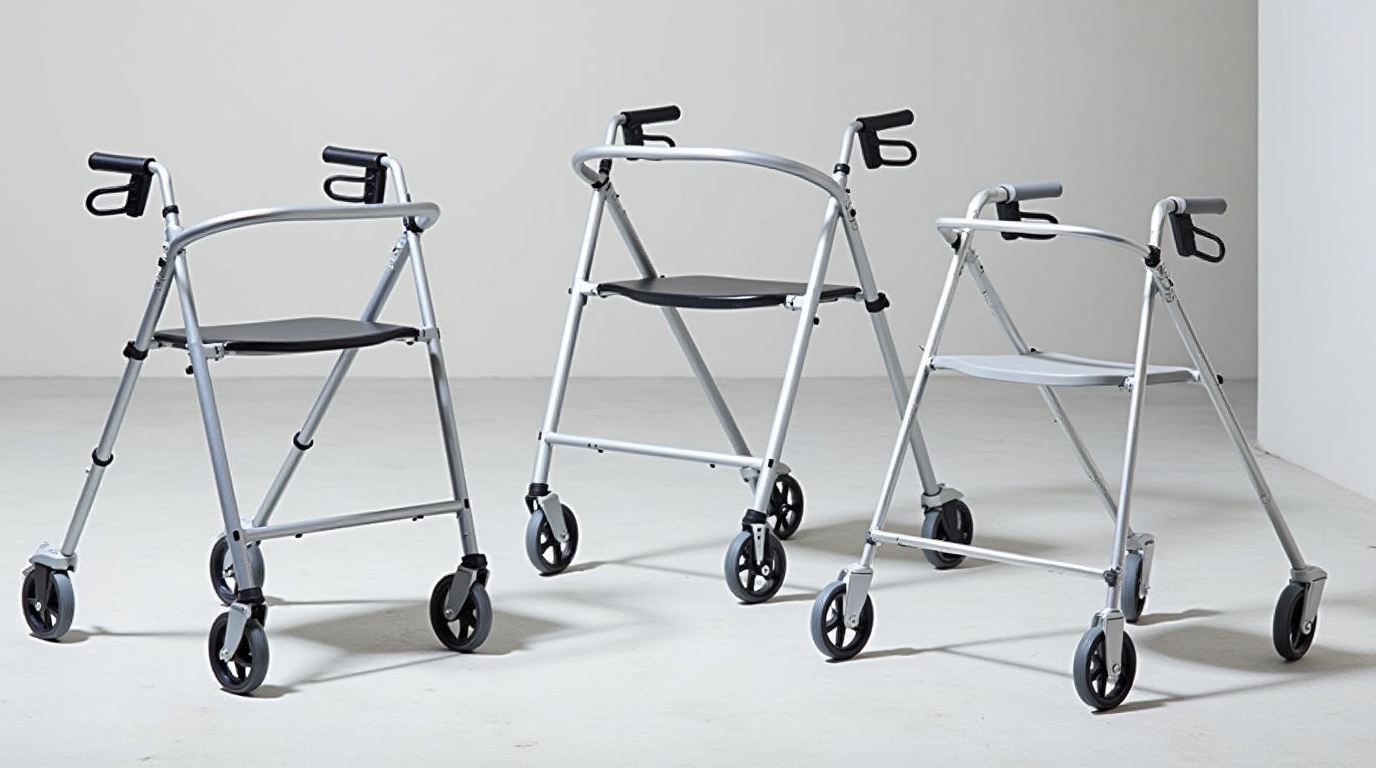Maintaining independence and mobility is one of the most important aspects of a healthy and fulfilling life, especially as we age or recover from injury. A rolling mobility companion commonly known as a walker with wheels—can be a life-changing tool that offers stability, support, and confidence with every step.
But not all rolling mobility aids are created equal. With dozens of options on the market, from basic wheeled walkers to advanced rollators with built-in seats, how do you choose the one that fits your lifestyle?
In this guide, we’ll walk you through everything you need to consider when selecting the right folding walker with wheels, based on your daily routine, physical needs, and environment.
1. Understanding Your Mobility Needs
Before choosing a device, it’s essential to assess your current physical condition. A mobility aid should match not exceed or limit your level of movement. Start by asking yourself:
- Do you need help with balance, endurance, or both?
- Are you recovering from surgery or managing a long-term condition like arthritis?
- Do you walk short distances indoors, or are you active and often on the go?
- Do you experience fatigue or discomfort while standing for extended periods?
Discussing these questions with a healthcare professional or physical therapist can provide clarity. They might also recommend specific features, like added stability or a seat for resting.
2. Types of Rolling Mobility Aids
There are two main categories when it comes to walkers with wheels:
Two-Wheeled Walkers
- Best for: Individuals who need more support and walk at a slower pace.
- Key Features: Two wheels in the front and rubber tips (non-skid) in the back.
- Advantages: Offers more stability than a rollator, prevents the walker from rolling away.
- Limitations: Must be lifted slightly to move forward, so it may not suit those with upper body weakness.
Four-Wheeled Rollators
- Best for: People with moderate to good balance who need assistance over longer distances.
- Key Features: Four wheels, hand brakes, padded seat, and often a storage pouch or basket.
- Advantages: Easy to push, ideal for outdoor use, provides a place to rest.
- Limitations: Not suitable for individuals who need a lot of support or cannot control braking mechanisms.
Understanding the difference helps you avoid choosing a device that is either too restrictive or too mobile for your comfort level.
3. Key Features to Consider
When selecting your rolling mobility companion, pay attention to these practical features:
Weight and Frame Material
Lightweight aluminum frames are easier to lift, fold, and transport. However, some heavier steel models may provide more durability and support for larger users.
Folding Mechanism
If you plan to store or transport your device often (in a car, plane, or tight closet space), look for a walker that folds easily. Many modern rollators collapse with one hand and stand upright when folded.
Wheel Size
- Small wheels (6 inches or less) are better for indoor use on smooth surfaces.
- Large wheels (8 inches or more) offer better performance on uneven terrain like grass, gravel, or sidewalks.
Seat and Backrest
If you fatigue easily or enjoy walking longer distances, a built-in seat can be incredibly helpful. Some rollators also feature padded backrests for extra comfort when seated.
Brakes
Reliable hand brakes are essential for safety. Test how comfortable you feel using the braking system, especially if you have arthritis or limited hand strength.
Adjustability
Choose a model with adjustable handle height to ensure proper posture while walking. Walking with a poorly fitted device can lead to back, shoulder, or wrist strain.
4. Matching a Device to Your Lifestyle
Let’s break this down by lifestyle scenario:
Homebodies or Limited Space Living
If most of your movement is indoors or within a small home or apartment:
- Opt for a two-wheeled walker or a narrow rollator.
- Make sure it can fit through tight doorways and turns easily in hallways.
- Folding functionality is important if you need to store it when not in use.
Active and Social Individuals
For those who enjoy outings, errands, or travel:
- A lightweight four-wheeled rollator with larger wheels is a great option.
- Look for one with a storage basket, a comfortable seat, and easy folding.
- Some models even come with travel bags or cup holders.
Rehabilitation and Post-Surgery Use
If you’re recovering from surgery or physical therapy:
- Consult your care team for specific recommendations.
- You may start with a two-wheeled walker for stability, then upgrade to a rollator as your strength returns.
Travelers
Frequent flyers or road-trippers need:
- A compact, foldable model that fits in a car trunk or overhead bin.
- Ultralightweight design without compromising stability.
- Check the folded dimensions and total weight before buying.
5. Safety First
No matter how modern or well-equipped your mobility aid is, safety is key. Make sure to:
- Always lock the brakes before sitting on a rollator.
- Avoid using the device to pull yourself up from a seated position.
- Remove obstacles and loose rugs at home to prevent tripping.
- Practice turning, folding, and using the brakes before going out.
You should feel comfortable and confident, not confused or anxious, when using your rolling companion.
6. Cost and Insurance Coverage
Mobility aids can range in price from $70 to over $300 depending on features, brand, and build quality. Some may be partially or fully covered by insurance or Medicare if deemed medically necessary.
Before purchasing:
- Check with your insurance provider or healthcare plan.
- Get a prescription or letter of medical necessity if required.
- Compare online and in-store options, including customer reviews.
Don’t forget to consider long-term value. A quality rollator may be more expensive up front but last significantly longer and offer better comfort and durability.
7. Test Before You Buy
Whenever possible, test a few different models at a medical supply store, rehab center, or senior living facility. This allows you to compare:
- Comfort
- Weight
- Turning radius
- Brake responsiveness
- Foldability
You’ll immediately notice how each model “feels” and that gut instinct is often your best guide.
Conclusion
A rolling mobility companion isn’t just a tool it’s a part of your daily routine, your safety, and your independence. Choosing the right one depends on your lifestyle, environment, and physical needs.
Whether you’re regaining mobility after surgery, looking for support on longer walks, or just want a more secure way to move around the house, the right rolling aid can make a world of difference.
Take your time, do your research, and don’t hesitate to ask for professional guidance. The right choice will give you not only support but also freedom, confidence, and comfort with every step you take.



